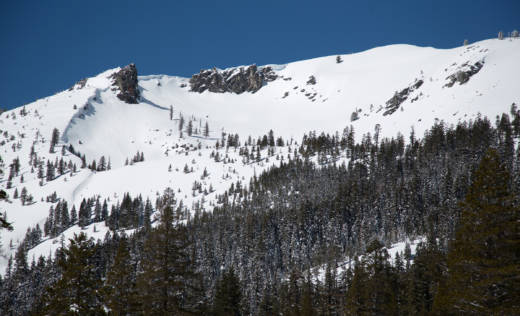California water officials announced Wednesday that snowpack across the Sierra Nevada is measuring 53 percent of the historical average for the start of April.
The state’s Department of Water Resources (DWR) conducted the fourth monthly snow survey of the season today at Phillips Station snow course south of Lake Tahoe.
DWR spokesman Chris Orrock says the region experienced a handful of big snow storms in March, but they weren’t enough to make up for a dry January and one of the driest Februaries on record.
“This year we’re probably going to have one of the 10 worst snowpacks in California history,” says Orrock.
Scientists in California closely monitor Sierra snowpack leading up to April 1st, around the time when the spring runoff typically begins. The water that melts off the snowpack helps to replenish California’s reservoirs in dry months.
